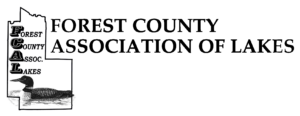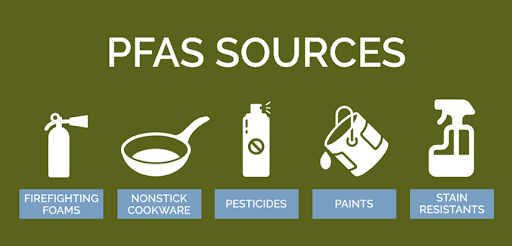PFAS
Northern Wisconsin known for its pristine lakes, lush forests, and vibrant communities, faces a growing environmental challenge: PFAS contamination. These are commonly known as “forever chemicals,” and scientifically known as per- and polyfluoroalkyl substances, have become a pressing concern for residents, environmental advocates, and policymakers alike. PFAS are a group of human-made chemicals widely used since the 1950’s in products like non-stick cookware, water-resistant clothing, firefighting foam, and food packaging. Their durability, while useful in manufacturing, also makes them resistant to breaking down in the environment. Unfortunately, PFAS can accumulate in water, soil, and even human bodies, potentially leading to adverse health effects. Studies have linked PFAS exposure to issues such as liver damage, immune system suppression, and increased risks of certain cancers. PFAS contamination has been detected in groundwater, surface water, and even drinking water supplies. On the other hand, the environmental toll of PFAS contamination is significant. Wildlife, including fish and aquatic ecosystems, can absorb these chemicals, disrupting local biodiversity. For a region that relies heavily on outdoor recreation and tourism, this poses a dual threat to both the environment and the economy. Moreover, addressing PFAS contamination is costly. Municipalities face financial strain as they work to implement water treatment systems, conduct testing, and remediate affected areas. These efforts, while necessary, require substantial funding and technical expertise. Despite these challenges, there is progress being made. Some of the key initiatives to making this progress is monitoring and testing. The Wisconsin DNR has ramped up efforts to monitor PFAS levels in water sources and identify contamination hotspots. Another contributor is the legislative action, advocates are pushing for stricter regulations on PFAS use and disposal, as well as funding for cleanup efforts. Community engagement is also a big factor, local communities are raising awareness about PFAS risks and advocating for clean water solutions. One last step towards the progress being made is the new innovative technology. Researches are exploring advanced filtration systems and other technologies to remove PFAS form water supplies effectively. While the road to addressing PFAS contamination in northern Wisconsin is long, the region’s resilience and commitment to environmental stewardship offer hope. By continuing to prioritize clean water initiatives, supporting affected communities, and holding polluters accountable, northern Wisconsin can work toward a future where natural beauty and resources remain protected for generations to come.
Conservation Corner is a weekly article produced by the Forest County Land Conservation and Land Information Department. For more information contact Lucas O’Brien, Forest County Land Conservation Technician at 715-478-1387 or by e-mail at

